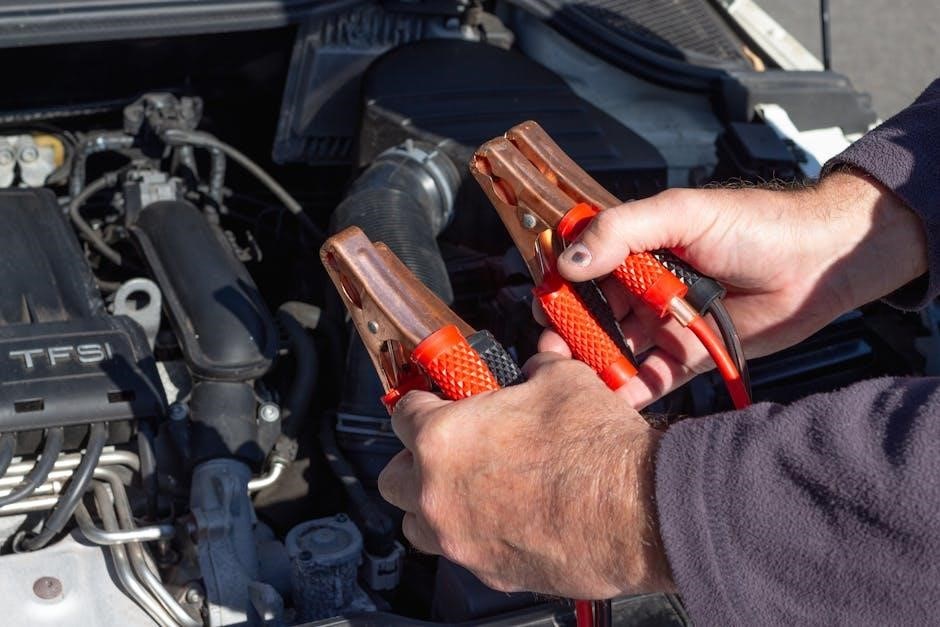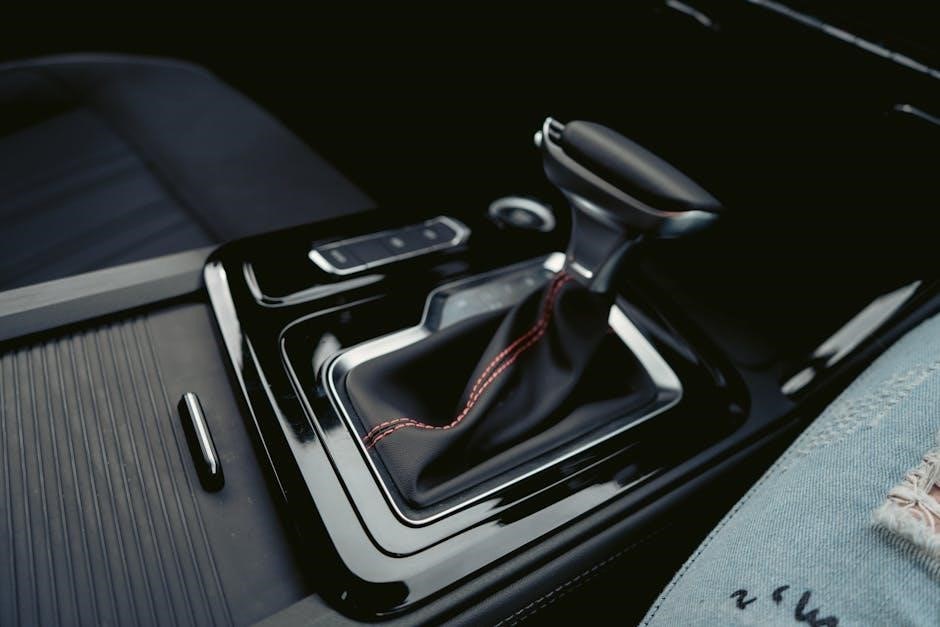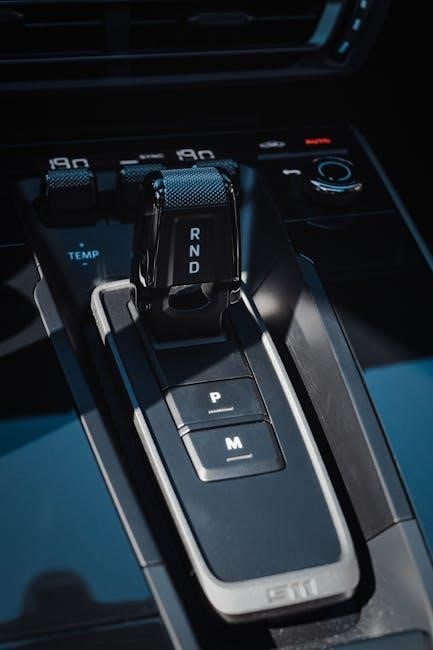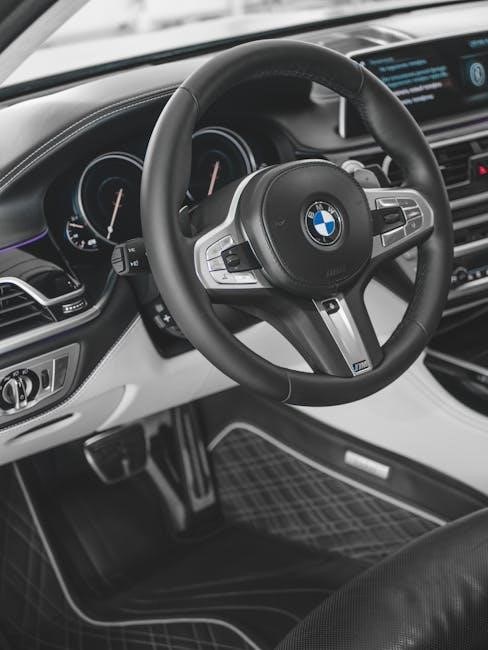Automatic start systems for manual transmissions offer convenience but pose unique challenges‚ requiring specialized solutions to ensure safe and reliable operation without damaging the vehicle’s transmission or clutch system․
What is an Automatic Start for Manual Transmission?
An automatic start for a manual transmission vehicle is a specialized system that enables remote starting without physical interaction with the clutch pedal․ Unlike automatic transmissions‚ manual vehicles lack a “park” gear sensor‚ requiring unique solutions like clutch bypass modules to simulate clutch engagement․ These systems ensure the engine starts safely by verifying the transmission is in neutral‚ preventing unintended movement․ They provide convenience while addressing the distinct challenges of manual transmissions‚ making remote starting possible without compromising safety or functionality․
Why Manual Transmissions Present Unique Challenges for Remote Starters
Manual transmissions present unique challenges for remote starters due to the absence of neutral gear sensors and the clutch pedal’s role in engine engagement․ Unlike automatics‚ manuals require the clutch to disengage the engine from the transmission‚ complicating remote start functionality․ Without proper safeguards‚ a remote starter could inadvertently engage the transmission‚ leading to unintended vehicle movement or damage․ This necessitates specialized solutions‚ such as clutch bypass modules‚ to ensure safe and reliable operation‚ addressing these distinct mechanical complexities compared to automatic transmissions․
Key Challenges of Installing an Automatic Starter on a Manual Transmission
Installing an automatic starter on a manual transmission involves overcoming the lack of neutral gear sensors and addressing the clutch pedal’s role‚ requiring specialized solutions to ensure functionality and safety․
The Absence of Neutral Gear Sensors
Manual transmissions lack sensors to confirm neutral gear‚ making remote starting risky․ Without this verification‚ the vehicle could start in gear‚ leading to unintended movement or damage․ This absence requires specialized solutions to ensure safety and prevent accidents during remote starts․
The Role of the Clutch Pedal in Remote Starting
The clutch pedal plays a critical role in remote starting a manual transmission vehicle․ Since the driver isn’t present to press the clutch‚ specialized systems must simulate this action to prevent damage․ This is typically achieved through clutch bypass modules or other automated solutions that ensure the vehicle starts safely and remains in neutral․ Without proper clutch engagement‚ remote starting can cause the vehicle to move unexpectedly‚ posing significant safety risks and potential damage to the transmission․

Installation Solutions for Manual Transmission Remote Starters
Installation solutions include clutch bypass modules and specialized systems like Compustar and Python‚ which simulate clutch engagement‚ ensuring safe remote starting without transmission damage or unauthorized vehicle movement․
Clutch Bypass Modules: How They Work
Clutch bypass modules simulate the electronic signal produced by the clutch pedal‚ typically a ground signal sent to the vehicle’s ignition system․ This allows the engine to start remotely without the driver pressing the clutch‚ ensuring the transmission remains in neutral during startup․ These modules are essential for manual transmissions‚ as they prevent damage from unintended gear engagement and ensure safe operation․ They integrate seamlessly with remote start systems‚ providing a reliable solution for manual transmission vehicles․
Specialized Systems Like Compustar and Python
Compustar and Python are leading brands offering remote start solutions for manual transmissions․ These systems require a clutch bypass module to simulate the clutch pedal’s electronic signal‚ enabling remote starts without driver input․ They ensure the vehicle is in neutral and prevent accidental starts‚ protecting the transmission․ These systems integrate seamlessly with modern vehicles‚ providing advanced safety features and convenience․ They are designed to prevent unauthorized use and transmission damage‚ making them reliable choices for manual transmission owners seeking remote start functionality․

Safety Concerns and Precautions
Installing an automatic starter on a manual transmission requires careful precautions to prevent transmission damage‚ unintended vehicle movement‚ and unauthorized use‚ ensuring safe and controlled operation․
Transmission Damage Risks Without Proper Safeguards
Without proper safeguards‚ remote starting a manual transmission vehicle can cause significant damage to the transmission․ If the clutch is not disengaged or the vehicle is not in neutral‚ the engine may attempt to drive the wheels unexpectedly‚ leading to strain on the drivetrain․ This can result in costly repairs to the transmission‚ clutch‚ or other components․ Additionally‚ improper installation or lack of clutch bypass modules can exacerbate these risks‚ making it crucial to ensure all safety measures are in place before enabling remote start functionality․
Preventing Unauthorized Use and Theft
Unauthorized use and theft are significant risks with manual transmission remote starters․ Without proper safeguards‚ anyone with the remote can start the vehicle‚ potentially leading to theft or misuse․ To mitigate this‚ advanced systems incorporate rolling code encryption and multi-level authentication‚ ensuring only authorized users can activate the remote start․ Additionally‚ some systems allow owners to set specific parameters‚ such as requiring the brake pedal to be pressed before shifting into gear‚ further enhancing security and preventing unauthorized operation of the vehicle․

Pros and Cons of Automatic Start for Manual Transmission
Automatic start systems for manual transmissions offer convenience and safety benefits but pose risks like transmission damage‚ potential abuse‚ and higher installation costs‚ requiring careful consideration․
Convenience and Safety Benefits
Automatic start systems for manual transmissions provide unparalleled convenience‚ allowing drivers to start their vehicles remotely from a distance․ This feature is especially beneficial in extreme weather conditions‚ such as freezing winters or scorching summers‚ enabling the car to warm up or cool down before driving․ Additionally‚ remote starting enhances safety by allowing the engine to run without the driver being present‚ which can deter theft and provide peace of mind․ The ability to start the car from a secure location also adds a layer of security‚ particularly in unsafe areas․ Furthermore‚ this technology can improve fuel efficiency by allowing the engine to reach optimal operating temperature before driving․ Overall‚ these systems offer a blend of practicality and reassurance for manual transmission vehicle owners․
Potential Drawbacks: Abuse‚ Damage‚ and Limited Functionality
Automatic start systems for manual transmissions can pose significant risks‚ including potential abuse and unauthorized use if proper safeguards are not in place․ Without a clutch interlock or neutral gear verification‚ the system may start the car improperly‚ leading to transmission damage or unexpected movement․ Additionally‚ these systems often lack the full functionality of automatic transmission remote starters‚ as they cannot engage gears or move the vehicle․ These limitations highlight the need for careful installation and responsible use to mitigate risks and ensure safe operation․

Future Trends in Manual Transmission Remote Start Technology
Advancements in automated clutch systems and smartphone-centric solutions are expected to enhance remote start functionality for manual transmissions‚ improving safety‚ convenience‚ and integration with modern vehicle technologies․
Advancements in Automated Clutch Systems
Automated clutch systems are revolutionizing manual transmission remote start technology․ These systems use electronic actuators to engage and disengage the clutch seamlessly‚ eliminating the need for driver input․ By integrating advanced sensors and software‚ they ensure smooth operation during remote starting‚ preventing potential damage to the transmission․ This technology also enables features like automatic gear shifting‚ enhancing convenience for drivers․ As these systems become more refined‚ they are expected to become a standard feature in modern vehicles‚ offering a blend of traditional manual control with modern automation and connectivity‚ including smartphone app integration for enhanced functionality․
OEM Integration and Smartphone-Centric Solutions
Modern remote start systems for manual transmissions are increasingly integrating with OEM systems‚ ensuring seamless compatibility with factory electronics․ Smartphone-centric solutions now allow drivers to start their cars‚ monitor status‚ and receive alerts through dedicated apps․ These systems often include geofencing and biometric authentication‚ enhancing security and reducing theft risks․ Such advancements are making remote start technology more accessible and user-friendly for manual transmission vehicles‚ while maintaining the reliability and safety expected from OEM solutions‚ and paving the way for a connected‚ futuristic driving experience․
Automatic start systems for manual transmissions offer convenience but require careful installation and safeguards to prevent damage or unauthorized use‚ making them a viable option for discerning drivers․
Feasibility and Considerations for Manual Transmission Owners
Installing an automatic start system on a manual transmission vehicle is feasible but requires careful consideration․ Owners must weigh the convenience of remote starting against potential risks like transmission damage or unauthorized use․ Specialized solutions‚ such as clutch bypass modules‚ are essential to ensure safe operation․ Professional installation is highly recommended to avoid mechanical issues․ While the benefits of enhanced convenience and safety are appealing‚ the complexity and cost of these systems may deter some owners․ Ultimately‚ the decision hinges on individual priorities and willingness to invest in proper safeguards․
